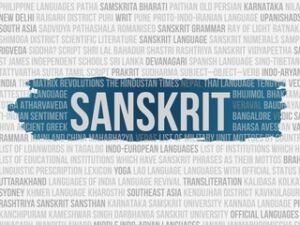Introduction:
The languages of India primarily belong to two major linguistic families, Indo-European (whose branch Indo-Aryan is spoken by about 75 percent of the population) and Dravidian (spoken by about 25 percent). Other languages spoken in India come mainly from the Austro-Asiatic and Tibeto-Burman linguistic families and a few language isolates. Individual mother tongues in India number several hundred, and more than a thousand if major dialects are included. The Constitution of India recognizes 23 official languages, spoken in different parts of the country, and two official classical languages, Sanskrit and Tamil. In 2004, the government elevated Tamil. to the newly created official status of “Classical Language,” followed by Sanskrit in 2005.
Learning Sanskrit improves our thought processes by activating certain portions of our brain. The language is well-formed and enables us to learn many other languages with ease. Chanting Sanskrit texts creates an inner state of calmness and relaxation. There is further evidence to indicate that it’s highly suitable for artificial intelligence systems. For the last several decades, there has been a growing interest in learning the Sanskrit language in many parts of the world. There is no such thing as the best institute to learn Sanskrit in Delhi, there are a couple of good institutes that offer courses in the Sanskrit language. We’ve listed some of them for you below:





